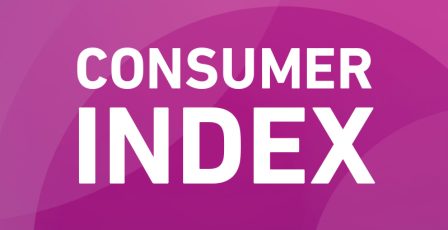Affordability assessments for insurers: Why you need this essential risk management function
Virtually no sector has escaped rising costs over the past few years, and insurance is no different. With costs increasing rapidly for insurance providers, consumers are now seeing higher premiums across the board.
In this article, Alan Kirk explores why premiums are risk, how consumers are impacted, and why insurers need to understand customer affordability.
- Inflationary pressures: Across the globe, major economies have experienced high inflation due to rising energy costs and the aftermath of the Covid-19 pandemic. Inflation has pushed up the price of car components and raw materials for building work, making insurance-funded repairs more expensive. To ensure they can cover customers’ higher costs, premiums have risen.
- More complex repairs: With around 1.3 million electric cars on UK roads[3], and millions of others equipped with high-tech features, car repairs are getting more complex. Specialist technicians and high-spec parts are pushing the price of the average car repair even higher.
- Extreme weather events: Climate change is making extreme weather events more frequent and severe, meaning home insurance providers are paying out more than ever. The ABI reported that property claim payouts exceeded £1.4 billion[4] in the second quarter of 2024, covering everything from storm damage to flooding.
- Regulatory Changes: Regulatory frameworks governing the insurance industry are frequently evolving, often leading to increased compliance costs for insurers.
Customers are changing their habits to keep costs down
Insurance is an unavoidable cost for those who own a car or property. It’s a legal requirement for any vehicle that doesn’t have a SORN, and most mortgage providers won’t lend if a property doesn’t have buildings insurance. To manage the financial pressure of rising bills, customers are deploying a few tactics to reduce insurance costs without invalidating their policies.
→ Price comparison websites: While not a new thing, Our data suggests 85% of adults with internet access use price comparison websites. Even though prices are higher across the board, and people are unlikely to pay less than they did last year, customers are still shopping around.
→ Lowering coverage levels: Some consumers are opting for the lowest level of car insurance coverage, third-party only, to keep premium costs down – despite the fact it can lead to far higher costs in the event of an accident.
→ Monthly instalments: Our data indicates that more customers are choosing to pay their insurance in monthly instalments. The FCA has also indicated that up to 20 million adults[5] now pay monthly, either directly via their insurer or through third-party finance providers.
Gauging customer creditworthiness and affordability
Insurance might be an essential cost, but that doesn’t mean every potential customer can afford the premiums. Before agreeing to a policy, particularly if it will be paid off monthly, insurers need to assess each customer’s creditworthiness. This check should give the provider a clearer understanding of an individual’s ability to repay the credit and show them if the policy’s payments are affordable.
So what should a robust assessment of creditworthiness and affordability look at? Even a basic check should consider things like:
✔ Credit history, which will tell providers if individuals have missed payments on other credit agreements
✔ Public credit information like CCJs or bankruptcy, which shows the customer is at higher risk of not keeping up with payments
✔ Income and expenditure to make sure a customer can reasonably afford a policy with their current level of income and any other credit agreements, like a mortgage, personal loan or phone contract
Following regulatory frameworks to protect customers
Creditworthiness and affordability checks don’t just protect insurance providers against non-payment. They’re an important part of adhering to the FCA’s rules on offering a genuinely affordable level of consumer credit, including for insurance policies. Its Consumer Credit Sourcebook (CONC) states that organisations must assess a customer’s ability to make repayments without getting into financial difficulty.
The goal of the FCA’s rules is to stop customers taking on too much debt and struggling to meet their monthly payments in the future. Recently introduced Consumer Duty regulations aim to complement CONC, encouraging organisations to ensure their products are suitable, and deliver good outcomes for their customers.
Some cases require even more careful handling. That’s why the FCA has recently strengthened duty of care measures for consumers who fall into the Borrower in Financial Difficulty (BiFD) category. They may:
- Have missed payments on their credit or mortgage products
- Find their bills to be a heavy burden
- Have sought debt advice due to their financial situation
- Borrow on one loan specifically to make payments on another
Organisations will likely be expected to provide support to both new and existing customers who meet this definition throughout the term of the agreement. Our data suggests that around 13% of the UK population falls into this definition.
What is the government’s Insurance Affordability Task Force?
In response to rising insurance costs, the new UK government has announced an Insurance Affordability Task Force[6]. This initiative aims to address the challenges consumers face with the cost of insurance.
Key areas of focus for the task force include:
✔ Understanding consumer needs: Gaining insights into what customers are finding challenging and what they need in the current economic climate.
✔ Evaluating regulations: Assessing the current regulatory framework for insurance and identifying potential reforms to improve affordability.
✔ Identifying best practices for insurers: Highlighting best practices among insurers to make sure policies are as affordable as possible, and that customer support is genuinely helpful and readily available.
The task force is expected to primarily focus on insurance pricing, which will inevitably influence ongoing payments and how insurers assess customer affordability.
How insurers can better understand customer affordability
Understanding a customer’s financial position keeps regulators happy and helps insurers make better, data-backed decisions about affordability.
We have developed a range of solutions to help organisations, including insurance providers, understand and assess their customers’ creditworthiness and affordability profiles. They pull from a broad range of data to provide a more accurate and granular view of individual affordability, including:
- Income and expenditure estimates informed by current account turnover (CATO) data
- Monthly credit commitments from Credit Account Information Sharing (CAIS)
- Other data sources from organisations such as the Office for National Statistics (ONS), into a consolidated view, to help organisations determine whether a monthly payment is affordable to an individual.
- Additional data sources that are also available in the market that allow organisations to verify income directly from payslips (where consented).
There isn’t an easy answer to rising insurance bills, but there are proven ways to help insurers continue offering responsible finance solutions. They allow customers to spread the cost without causing more difficulty for those already in a precarious financial position.
At Experian, we have a range of tools and services to make customer credit checks a simple, streamlined process. With millions of data points on consumer borrowing, we can help you make better decisions in seconds.
How can we help?
Our breadth and depth of data work to give you the latest insight on your customers.
Find out how Affordability IQ can help you and your customers.
[1] Motor Insurance Premiums Continue to Rise as Insurers Battle Costs, ABI
[2] The Cost of Home Insurance Rises as Insurers Support Customers and Battle Cost Pressures, ABI
[3] How many electric cars are there in the UK?, EV Market Stats 2024, Zapmap
[4] Property insurance payouts hit record quarterly high, ABI
[5] Market study into the Provision of Premium Finance, FCA
[6] Ministers bring together industry experts and consumer champions to tackle spiralling costs for drivers, Gov.UK









